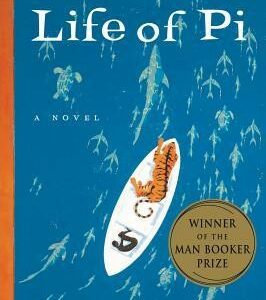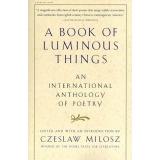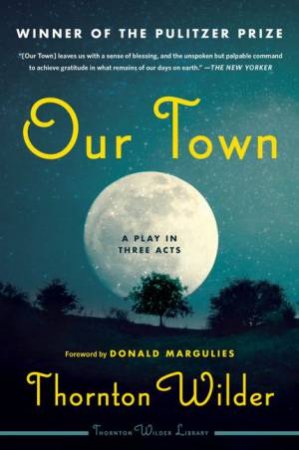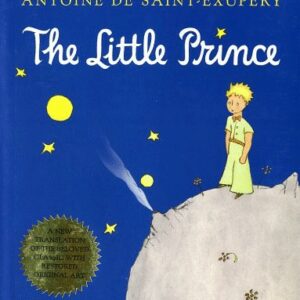A Conspiratorial Life
$30.00
| Title | Range | Discount |
|---|---|---|
| Trade Discount | 5 + | 25% |
- Description
- Additional information
Description
The first full-scale biography of Robert Welch, who founded the John Birch Society and planted some of modern conservatism’s most insidious seeds.
Though you may not know his name, Robert Welch (1899-1985)—founder of the John Birch Society—is easily one of the most significant architects of our current political moment. In A Conspiratorial Life, the first full-scale biography of Welch, Edward H. Miller delves deep into the life of an overlooked figure whose ideas nevertheless reshaped the American right.
A child prodigy who entered college at age 12, Welch became an unlikely candy magnate, founding the company that created Sugar Daddies, Junior Mints, and other famed confections. In 1958, he funneled his wealth into establishing the organization that would define his legacy and change the face of American politics: the John Birch Society. Though the group’s paranoiac right-wing nativism was dismissed by conservative thinkers like William F. Buckley, its ideas gradually moved from the far-right fringe into the mainstream. By exploring the development of Welch’s political worldview, A Conspiratorial Life shows how the John Birch Society’s rabid libertarianism—and its highly effective grassroots networking—became a profound, yet often ignored or derided influence on the modern Republican Party. Miller convincingly connects the accusatory conservatism of the midcentury John Birch Society to the inflammatory rhetoric of the Tea Party, the Trump administration, Q, and more. As this book makes clear, whether or not you know his name or what he accomplished, it’s hard to deny that we’re living in Robert Welch’s America.
Edward H. Miller is a teaching professor at Northeastern University and the author of Nut Country: Right-Wing Dallas and the Birth of the Southern Strategy, also published by the University of Chicago Press. We live in the age of Robert Welch—whether or not we know who he is, what he did, or why he matters. So shouldn’t we know something more about a man whose worldview is absolutely everywhere?
The day Joseph R. Biden took the oath of office from Chief Justice John Roberts and became the forty-sixth president of the United States, Donald J. Trump still had not conceded. Election fraud by the Democrats, Trump tweeted for two whole months, stole the election from him and the American people. But this claim was pure myth. Court after election commission after court found no evidence to support Trump’s words. A full 75 percent of Republicans didn’t believe that Joe Biden legitimately won the 2020 election, laying the groundwork for Donald Trump to incite an insurrection to steal it for real.
The QAnon conspiracy theory—which holds that Democrats in the Deep State undermined Trump’s presidency in order to cover up their child-sex racket, and claims Representative Marjorie Taylor Greene among its more prominent adherents—is favorably viewed by nearly one-third of Republicans, while polling shows that violent anti-democratic sentiment is rampant in the conservative movement. And when Republican lawmakers had a chance to draw a bright line between their party and the conspiracy theorists and the insurrectionists during Trump’s impeachment trial, the vast majority voted to acquit.
The QAnon conspiracy theory had no basis in reality. Trump’s election fraud conspiracy theory had no basis in reality, but his supporters and some Republican leaders echoed the false charge. Trump’s entire political career—and a great deal of his popular appeal—lay in conspiracism of a kind that owes something to Robert Welch…
Who then was Robert Welch? To some, he was a genius: a child prodigy who was reading at age two. He attended the University of North Carolina when he was twelve. He created the Sugar Daddy and other childhood confectioneries. He founded the John Birch Society, the most successful anti-Communist organization in the history of the United States.
To his detractors, he was at best a prophet of doom who predicted that the country was on the verge of a Communist conspiracy engulfing all aspects of American life—education, religion, the government. His star flew high but petered out by the late 1960s when the John Birch Society was no longer a force to be reckoned with.
Many Americans first learned of the candy maker after March 20, 1961. That day, Senator Milton Young of North Dakota stepped up to the rostrum of the US Senate; read thirteen pages of Welch’s book, The Politician; and reported that Welch called former president Dwight David Eisenhower a Communist.
Now in most periods of American history, Welch’s bizarre thesis would have made him a pariah. Welch would have been pitied as somebody suffering a pathology. He would have been disqualified as an irresponsible purveyor of unreasonable ideas.
But these were not usual times. The Cold War was at its height, and Americans were very anxious. They were stocking food and building bunkers. They were getting ready to “duck and cover” in the event of a nuclear attack from the Soviet Union that might come any moment.
Times were tense.
Thus, Welch was not just seen as unreasonable. He was considered a danger to the country. After all, he was calling the man who planned D-Day, defeated Hitler, and won World War II a Red. Welch embodied extremism and the body politic, according to the consensus. He became associated in the public mind with the Ku Klux Klan, the racist White Citizens’ Councils, and even George Lincoln Rockwell’s American Nazis. The Anti-Defamation League called him a covert anti-Semite. Others said there was nothing covert about him.
Welch’s problem was that most of what he said about Communism seemed absurd. His analysis sounded delusionary and made all anti-Communists appear ridiculous.
Welch’s early life helped make him a conspiracist. He was born in a postbellum South that was very suspicious of the North. His ancestors feared the loss of their social status, the loss of their slaves, the loss of their jobs, and the decline of their White supremacy. And even after he had left the South, as a young candy manufacturer working in an industry without patents and fearing that his latest confectionery invention could be pilfered by the competition, Welch was always in a state of hypervigilance. That Welch’s original business was unsuccessful contributed to his insecurity. And after he went into business with his brother, James, whom he’d taught everything he knew about the candy business, he discovered James never considered him a business partner but simply an employee who deserved a daily wage but no more.
In the early 1950s, Welch watched with great interest Senator Joseph McCarthy’s investigations into Communist infiltration of government. Welch came to echo and even amplify the allegations of treason from McCarthy and other Republican public officials, such as Senator William Jenner. Secretary George Marshall was one of the most honorable men in the country, but Senator Jenner called Marshall “a front man for traitors” and suggested that Marshall tricked the American people into World War II. Jenner set the stage for McCarthy’s attacks on the army, which set the stage for Welch’s assaults on the former head of the army—Dwight David Eisenhower. Amid numerous allegations of espionage, McCarthy attacked Secretary of State Dean Acheson and Marshall as part of “a conspiracy on a scale so immense so as to dwarf any previous such venture in the history of man.” Daily calls for Acheson’s resignation became the norm for the Republican Party…
In the long run, Welch’s kind of conspiracy has grown only stronger. More people believe extreme theories. It used to be that Welch’s commitment to conspiracy theory made him, as well the John Birch Society, easy to dismiss; this may be why no historian has written a full-scale biography of Welch. Pieces of the story are included in the scores of books on American conservatism, but they tend to focus on the Society’s marginalization and its waning importance to postwar conservatism after 1966.
When Donald Trump won the presidency, historians began revising the standard narrative of American conservatism. That standard narrative holds that the Welch conspiratorial style waned when the patron saint of American conservatives, William F. Buckley, kicked him out of the conservative movement in the early 1960s. Other journalists and academics wrote off the John Birch Society and Welch as irrational and paranoid. Because of his penchant for conspiracy theory, Welch threatened the America that Buckley wanted to build. Historians largely embraced Buckley’s vision that making conservatism “intellectually respectable” was absolutely necessary to its success: Buckley purged extremists, and these excommunications made possible the rise of the age of Reagan. According to the usual narrative, Welch and the Society became particular liabilities to the Republican Right after Barry Goldwater’s tremendous defeat in the presidential election of 1964. But Welch was a far more flexible and important a figure to the Republican Party than historians have realized. Introduction
1 Chowan County, North Carolina 1700–1899
2 Stockton, 1899–1910
3 Elizabeth City, Raleigh, Annapolis, 1910–1919
4 The Candyman, 1919–1927
5 Professional Breakdown and the Great Depression, 1928–1940
6 America First, 1940–1945
7 Postwar Dreams and Delusions, 1946–1950
8 The Candidate, 1950
9 May God Forgive Us, 1951–1952
10 There’s Just Something about Ike, 1952
11 A Republican Looks at His President, 1953–1954
12 The Saga of John Birch, 1954
13 Adventures in the Far East, 1954–1955
14 Arrivals and Departures, 1955–1958
15 The Indy Eleven, 1957–1959
16 Revelations, 1959–1960
17 Goldwater in ’60, 1960
18 Staccato Jabs, 1961–1962
19 Succession? 1961–1962
20 “Where Were You in ’62?,” 1962
21 Revolution in the Streets and the Paranoid Style in Belmont, 1963
22 Two Novembers, 1963–1964
23 Nadir, 1965–1966
24 Avenging the Insiders, 1966–1968
25 The Fifty-Foot Cabin Cruiser, 1969–1975
26 Bunker, 1970–1978
27 Making Morning in America . . . , 1970–1985
Epilogue
Acknowledgments
Notes
Index
Additional information
| Dimensions | 1 × 6 × 9 in |
|---|









